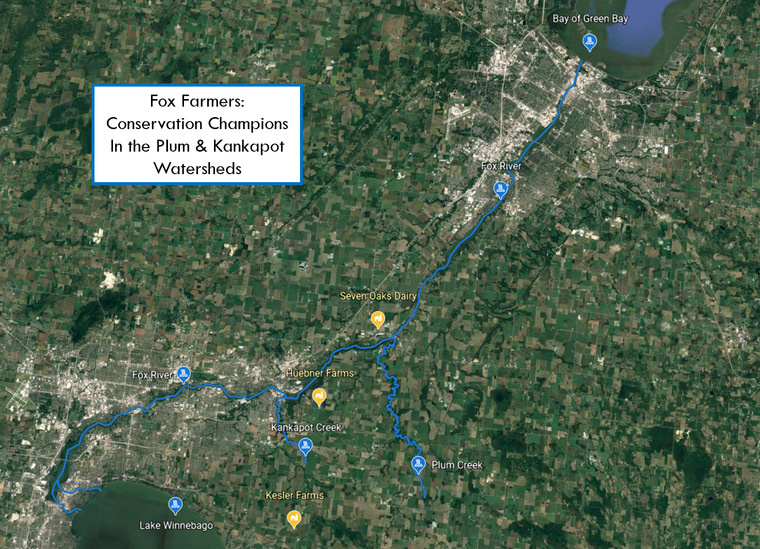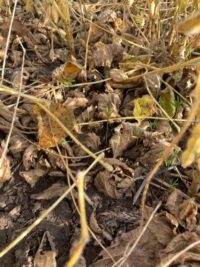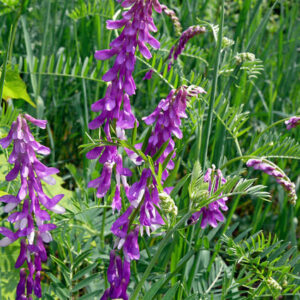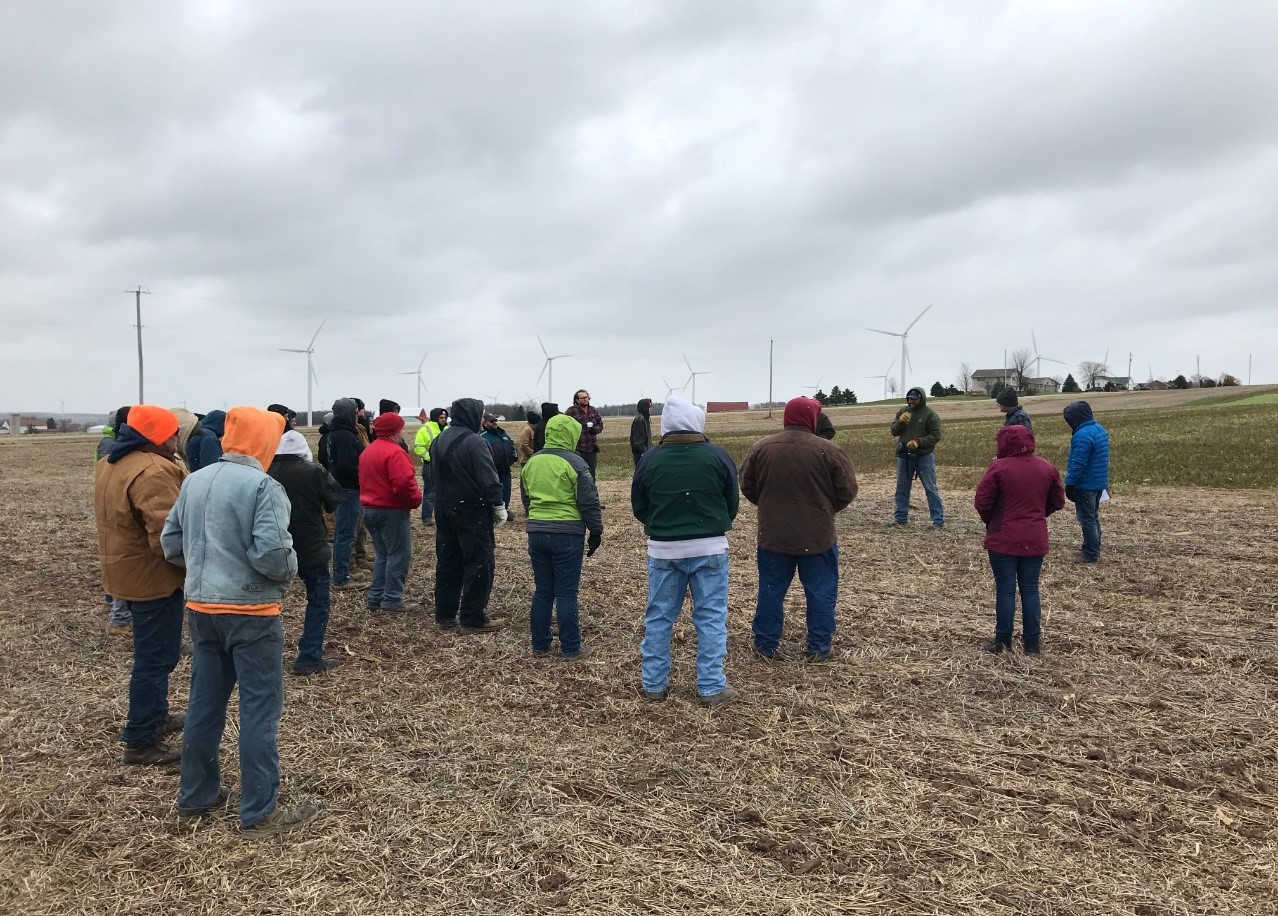Beginning in 2019, Fox-Wolf and Outagamie County Land Conservation Department partnered with three agricultural producers in the Plum Creek and Kankapot Creek Watersheds through a Great Lakes Restoration Initiative (GLRI) grant. These Conservation Champions are leading the way in demonstrating how the implementation of conservation practices such as cover crops, no-till, and low disturbance manure application on their fields provide a win-win for farm success and water quality. Transitioning to a new way of cropping can have it’s challenges, but these Conservation Champions have committed to working through difficulties and sharing what they’ve learned with other local producers. They will highlight the lessons they learn and showcase how to overcome the hurdles that may be preventing other farmers from adopting enhanced nutrient management. Andy Kiefer, Outagamie County Conservation Agronomist, is working with our Champions – Seven Oaks Dairy, Heubner Farms, and Kesler Farms – as they begin planting this spring and provided this summary of last year’s cropping season.

At the conclusion of the fall 2021 season, all remaining cover crops were planted and low disturbance manure was applied to all but 70 acres that will be broadcasted this spring after planting. These two practices are key to maintaining the water quality benefits during the “off season.” Cover crops keep soil in place instead of running off to the nearest ditch or stream during rain events and low disturbance manure is applied below the soil surface, allowing it to be taken up by the growing plants and keeping it from washing away. These conservation techniques reduce the amount of sediment and nutrients that end up in Plum and Kankapot Creeks, and eventually the Fox River.
Transitioning away from conventional farming methods to conservation based methods can come with challenges. Andy and the staff at Outagamie County continue to work in partnership with farmers to overcome hurdles to adoption of soil health practices including cover crop, no-till planting, and low disturbance manure management. To learn what works best for each farm, trials are important. During the 2021 growing season, the Conservation Champion farmers trialed a variety of new practices including interseeding hairy vetch, a winter hardy legume, and winter rye into soybeans both when the soybeans were about 6” tall and later in the season when the soybeans began to drop. By planting these cover crops into the harvestable crop during two different time periods, farmers will be able to discern what timing works best for their soil type and equipment.

Hairy vetch seedlings emerge from soybean leaves
In a small proof of concept trial, hairy vetch and winter rye was interseeded at soybean leaf drop to benefit the following corn crop. It is too late for hairy vetch to establish if planted after soybean harvest.
Hairy vetch fixes large amounts of nitrogen (N) that help meet N needs of the following crop, protects soil from erosion, helps improve soil tilth, and provides weed control during its vigorous growth in the spring and when left as a dead mulch at the soil surface. Hairy vetch can also be grazed or harvested as forage. Research has shown that hairy vetch mulch can increase main crop disease resistance and prolong leaf photosynthesis of the following crop. (Source: Penn State Extension)

Mature hairy vetch
Producers also tried different manure application tactics using a variety of different equipment and settings. This spring, the farmers and agronomists will meet to review the results of all the trial techniques used last year to see how residue, cover crop growth, manure applications and soil characteristics changed over winter and early spring. The conclusions from these trials will inform how cover crops, no-till, interseeding, and low disturbance manure application can be utilized successfully in the future.
The lessons learned by these Conservation Champions are not kept to themselves – they’re being shared with neighboring farmers to help them avoid difficulties in transitioning to new cropping methods. At the end of the growing season, these producers who have not been part of this project have been working with Outagamie County staff and installed nearly 2,100 acres of cover crops in addition to the cover crops installed through this project! Feedback has been coming in from producers that the spring 2021 no-till worked well for them and are excited to continue working towards more soil health practices. Continued field days, one-on-one meetings, and Basin Buzz newsletters will keep the communication open across the watershed to share what’s being learned by our Conservation Champion farmers.

A November field day brought producers together to look at different cover crop plot trials
These efforts are possible through a GLRI grant focused on:
- Continuing to build on conservation momentum in the Plum and Kankapot subwatersheds by providing support to producers by Outagamie County Land Conservation Department staff
- Working with Conservation Champions to overcome the hurdles of consistent implementation of cover crops, no-till, and low disturbance manure injection and
- Tracking successes and challenges and communicating best practices to other local producers
Questions? Want to learn more? Contact the Lower Fox River Watershed Program Director, Katie Woodrow, at katie@fwwa.org

Questions? Contact us:
Climate Smart Agriculture Project Manager: Katie Woodrow, 920.915.5767 or katie@fwwa.org
To receive periodic updates on these projects as well as many others, please subscribe to our newsletters: CLICK HERE







